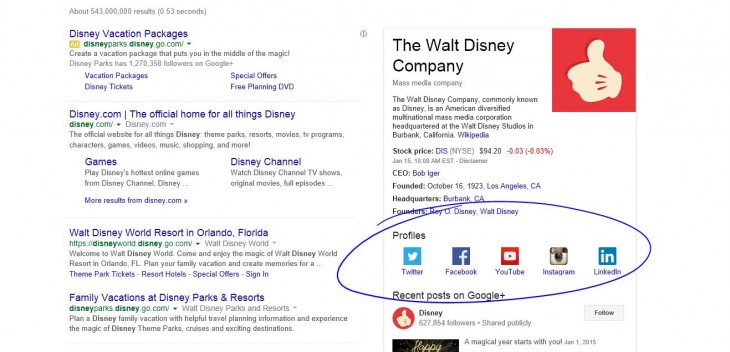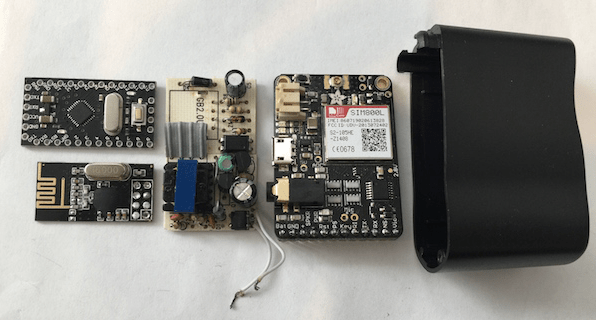Sections
Pick of the Week – Analyse This
This self-referential post analyses the contents of all the roundups published in this blog over the course of 2014. It’s intended to demonstrate how you might go about extracting and investigating web page text from the command line in order to glean insights about it without recourse to an industrial grade crawler and Hadoop cluster. One of the insights gained from gathering raw word count alone was that there’s probably way too much being published here each week!
Smartphones and Manufacturers
- High end Danish audio specialist B&O is struggling to deal with Asian competitors and is apparently ready to consider bid offers. According to their Chairman:
“We are not blind to the bigger Asian players, who have size advantages and much lower cost levels, which are some of our main problems”
- This excellent Steven Sinofsky piece helps explain why you need to look behind the products on show at CES to understand downstream supply chain dynamics in order to sense where the mobile industry is going. Bringing together a product involves component suppliers, manufacturers, brands and channels and that is become an increasingly complex interplay:
“The component manufacturers are now making proof of concepts that almost encroach onto the manufacturers and some brands are going straight to component makers. For the tech enthusiast these might be undifferentiated or even poor products, but for many they serve the purpose at least in the short-term.”
- TechCrunch CES interview with the VP Product Strategy at Russian OEM Yota Phone had him talking up the potential for e-ink screen technology:
“big dreams not only for the YotaPhone 3, but for a whole range of devices that use low-power e-ink screens to provide relevant information wherever and whenever you need it.”
Google and Android
- The HTC One M8 Lollipop update has started to roll out:
- Google Maps for Android now lets you share directions:
“Now, when you load a navigation route inside the app, you’ll notice a new “Share directions” option appear in the menu. The feature automatically creates a numbered list of text directions and attaches a link, which can then be shared via any compatible app on your Android device.”

- Google Translate has just been updated with two significant new features – seamless voice translation and WordLens style visual translation:
“a voice tool that makes it easier to have something resembling a natural conversation with a person using a different language by translating between two languages, using the microphone on a smartphone [and] a visual translator. People can place signs or other text in a phone’s viewfinder, similar to the way they take a picture, then receive an instantaneous translation on the screen.”
- These improvements to Google Translate taken together with recent advances in Skype’s translation abilities point to translation tech beginning to deliver after years of relative disappointment. Finally, the babelfish is coming.
- Google held a Project Ara developer conference this week. Engadget went hands on with the Spiral 2 concept which is purportedly the “final” hardware before launch and suggested “it’s certainly a much more polished version of the device than we’ve seen previously.”
- The shipping version will be Spiral 3 which is intended to compete with today’s peloton of Android superphones:
“we can expect the Spiral 3 to “match or exceed the functionality of a state-of-the-art smartphone today” with 20 to 30 third-party modules available for developers to tinker around with. On top of all that, the new prototype should feature day-long battery life, though Eremenko allows for a single battery swap to get users through the day. Throw in a high-end camera and support for 4G LTE connectivity (a big step from the 3G-only service the current prototypes work with) and you’ve got Google’s vision of its new prototype in a nutshell.”
- Ara comes with a configurator app that allows you to create a personalised Ara phone of your own:
“each Ara device has three distinct physical layers (the endo, modules and external shells) that can be tweaked and customized to a user’s liking. While using the Configurator app, people will (theoretically) be able to sift through the Marketplace for new modules and save really neat ones to their so-called Stashes.”
- Google Search now provides direct links to brand social profiles when you search for them by name:
“Now, when you look up a brand, you’ll see links to its social profiles provided right through its information card.”

Apps and Services
- Benedict Evans on where OTT Messaging goes next now that it has overtaken SMS. In his view, the future will be interesting but remains uncertain in terms of ultimate winners:
“we are still exploring what kinds of communications and sharing you can do with a platform that’s a lot more sophisticated than the desktop internet model of web browser + mouse + keyboard. A lot of this is about innovation in behaviour and psychology – social science, not computer science. Hence Snapchat, Secret or Yik Yak (or before them the Facebook News Feed itself) are about finding new behaviours, not new technology. In a sense this is a branch of media, not technology, and there may never be just one answer. I suspect voice will also be an area for innovation.”
- There’s a lot of experimentation implied in that remark, not least from traditional publishers such as WSJ who are now jumping on the messaging bandwagon as well using Line and WeChat:
Adam Najberg, WSJ’s digital editor for Asia, said, “We’re engaging with people on platforms where they spend a lot of time. We’ve become part of their conversations. It’s not about being a first mover. It’s about being a trusted provider of fair, accurate, timely and interesting news content. We’d ultimately love to have the hundreds of thousands in our new messaging platform audience become loyal subscribers. Talking to and with them on Line and WeChat is a huge first step”
- Qork is a new hyperlocal OTT messaging proposition that aims to:
“meld the best of Facebook groups, Twitter, Yik Yak, and Reddit to create a social media app that’s local to wherever a user is based. They can post text and photos related to anything in their area, such as events, stores, or news. “

- ClosetSpace is an interesting new fashion app that helps you choose an outfit and additionally “offers an on-demand pro stylist ($25/month) and outfit recommendations based on the weather” the latter being synchronised with your Google Calendar:

Infrastructure and Cloud
- NYT generalist introduction to Docker and why it is important:
“Like the big metal containers that can move from ship to ship to truck without being opened, software containers ship applications across different “cloud computing” systems and make it easy to tinker with one part, like the products for sale on a mobile application, without worrying about the effect on another part, like the big database at the heart of the corporate network.”
- HBR published a good article on the strategic value of APIs and why in an age of rapid digitization it is critical for business leadership to understand the transformative impact of APIs on business growth strategy. HBR call out the two main benefits of investing in building APIs for your business whatever it does:
“APIs can attract blockbuster complements. Early adopters will be able to significantly expand their revenues by discovering and joining forces with blockbuster complementors. One case in point is Twitter. In its early days, its user interface was not good enough for regular users. As a result, it floundered for a while. Then TweekDeck, a third-party developer, built a better user interface on top of the Twitter engine. This ultimately led to an explosion in Twitter usage.
APIs are the windows to new ecosystems. APIs allow firms to expand into markets they may never have previously considered. .. there are multiple ways APIs can generate growth for companies. While many may see APIs as just a technical concept, they clearly overlook the rising strategic significance of APIs. Particularly with the internet of things bringing digitization to all kinds of products and services, the influence of APIs is growing far beyond technology firms. All CEOs may soon need to find ways to align APIs with their growth strategies.”
Asia
- Xiaomi’s ambition is bigger than many realise and the key to their strategy are the youth of China:
“the key to understanding Xiaomi [is] they’re not so much selling smartphones as they are selling a lifestyle, and the key to that lifestyle is MiUI, Xiaomi’s software layer that ties all of these things together.”

- Chinese OEM Gionee is launching the W900, a 4G LTE Android flip phone running KitKat 4.4.4:

- Free View is a cardboard smartphone projector for under $30 from China:

Security
- USB as a vector for distribution of malicious software was a particular theme this week. First in the form of an e-cigarette charger carrying “production line malware“, a case of vaping being bad for your health:
“The made in China e-cigarette had malware hardcoded into the charger, and when plugged into a computer’s USB port the malware phoned home and infected the system.”

- Staying on the theme was news of a fake phone charger that doubles as a keylogger. The device exhibits a remarkable level of deviousness but fortunately only works with certain wireless keyboards. Hackaday provided a more detailed technical breakdown:
“it’s not a charger at all. It’s actually a little spy device disguised as a phone charger, capable of sniffing out every key you type on that wireless keyboard on your desk. Oh, and it can send the stuff it picks up straight to the eavesdropper’s phone. Oh! Oh! And it’ll keep working even if you unplug it — it only pretends to turn off.”


- Security was very much in the news with David Cameron’s pledge to allow the government to bypass strong encryption on social media communications on grounds of national security. Some of this seems unworkable not least for P2P security propositions like Silent Circle:
- Advanced Persistent Threat (or APT) or “sophisticated state-level attacks which infiltrate specific networks to steal information, assets or cause damage” is now a reality for corporations not just nation states. However, securing the modern enterprise against all threats, rather like stopping all terrorism, is pretty much impossible. It’s all about detection and damage limitation and “If you’re a CIO or CISO need to invest in the network and host visibility“:
“CISOs have one of the hardest jobs in the world these days, especially as the traditional perimeter-based approach to network security rapidly loses its relevance. Enterprise security has changed because the enterprise has changed, drastically so. Simply put, this new era of computing requires a new approach to security. “
- No wonder Security is the big thing in VC right now.
Machine Learning, Big Data and Robots
- Facebook likes can be used to accurately profile users according to researchers who “created a computer program that sifted through the Facebook likes of over 85,000 users to see if a person’s preferences could rat out their true persona“:
“the computer model could judge someone better than a friend or roommate by analyzing just 70 likes, and do better than a parent or sibling with 150 likes. The average number of likes per user in the study was 227, enough for the computer to evaluate someone better than almost anyone, with one exception: their spouses.”
- An automated online shopping bot with a $100 budget broke the law “and nobody knows what to do about it”:
“the programmers came home one day to find a shipment of 10 ecstasy pills, followed by an apparently very legit falsified Hungarian passport– developments which have left some observers of the bot’s blog a little uneasy.”
- An inspiring story about promising prospects in spinal cord repair using this e-Dura implant which “combines flexible electrodes (made of platinum and silicon microbeads), cracked gold electronic tracks and fluidic microchannels to deliver both electrical impulses and chemicals while mimicking the spine’s movements and avoiding friction.”
- Charming 3D printed robots for kids combining Arduino Leonardo, motors and 3D printed parts:
Wearables and the Internet of Things
- Lumoid Wearables Box is a WaaS (Wearables as a Service) proposition that lets you rent out five pieces of wearable tech a week in an attempt to find the right one for you.
- These five innovation lessons from successful 2015 Kickstarter campaigns correlate well with lean business model teachings:
- Build off the familiar
- Alleviate high costs and pain points.
- Respond to clusters of trends.
- Learn from real customer interactions.
- Translate benefits into tangible value.
- TechCrunch reviewed the Withings Activité Pop and reckon it’s the best general purpose activity tracker you can get today highlighting its 8 month battery life from a coin cell battery and its elegant understated classic watch look:
“The Withings Activité Pop is the device you should be looking at if you want an activity tracker. Those with more demanding needs are better-served by always-on heartrate monitors and dedicated fitness GPS watches, and anything in between is pretty much worthless feature creep. The wearables market has long seemed like a space struggling with its own identity, and Withings may be the first company to have found a formula suitable for the general buying public, especially when it comes to activity tracking in particular.”

- Fun retro style instructions for how to build a Raspberry Pi powered handheld Linux terminal:

- Smart shoes built by German researchers:
“The amount of energy that can be generated is rather small, ranging from one to four milliWatt (mW) when a test subject is travelling at 5km/h on solid ground. Although it couldn’t produce enough energy to charge a smartphone, which would normally require 2,000mW, the devices open up new possibilities for sensors and other devices. “

Smart Retail
- Shazam is branching out into retail advertising “to allow brands to engage with customers via smartphones more effectively“. If they have their way, the expression “Shazam this ad to find out more” will soon be a thing:

- Mobile devices are “shortening the path from passion to purchase” and enabling brands to reach consumers “anytime, anywhere“. A strong mobile presence is increasingly critical for any brand wishing to engage and retain loyal customers:
“Mobile devices are a major driver of the “now” economy because they enable brands to capture impulse. … Shoppers today are constantly bombarded with marketing messages and have come to expect instant gratification. This means brands only have a few seconds to bring customers from passion to purchase, but in this mobile-first world, that is all they need.”
Culture and Society
- The Atlantic created a photo gallery showing a world universally transfixed by mobile phone screens.
- Pew Internet Research published an update on Social Media usage in the US highlighting some interesting trends over the last two years. Facebook is still dominant and gaining more users than ever particularly among the older age groups but faces increased competition from the likes of Instagram and even LinkedIn:

- Uberization has come to serve as the canonical example of disintermediation. According to the author of this article, however, it’s better to view it as a superb example of how to choreograph a variety of complex manual steps into a very simple process encapsulated in a mobile app accessible from whichever glass you have to hand:
“I don’t think of Uber as a force that dis-intermediates—as we olds used to say—transportation, but one that creates value for itself, its drivers, and its users, by developing a new layer that integrates them all with maximum utility. A very talented developer once told me that the secret to a world-beating service like Dropbox was to make something very, very complicated seem devastatingly simple. To me, uberizing meant trapping a series of innovative processes—phone-enabled geo-location, payments and driver management and distribution—into an app-accessible service.”
- Jacques Peretti’s second episode on The SuperRich and Us focussed on our “hourglass society” polarised by a rich elite at one end and everyone else at the other. It’s powerful material and includes an interview with the founder of PeoplePerHour.com as well as a journey through London’s precariat, an alternative underground of manual microjobs including lunchtime human advertising hoardings:

